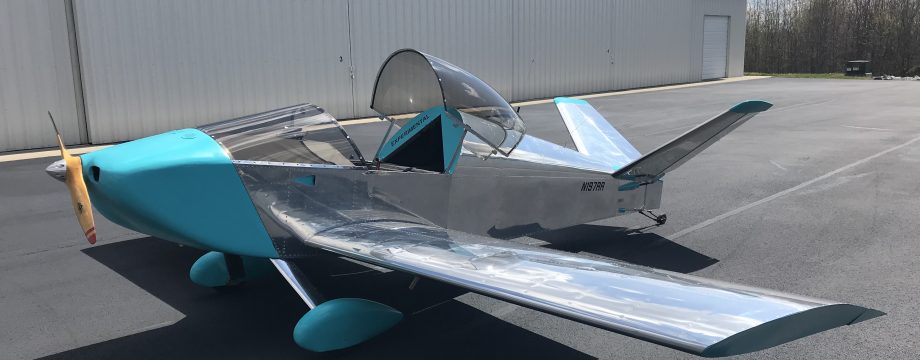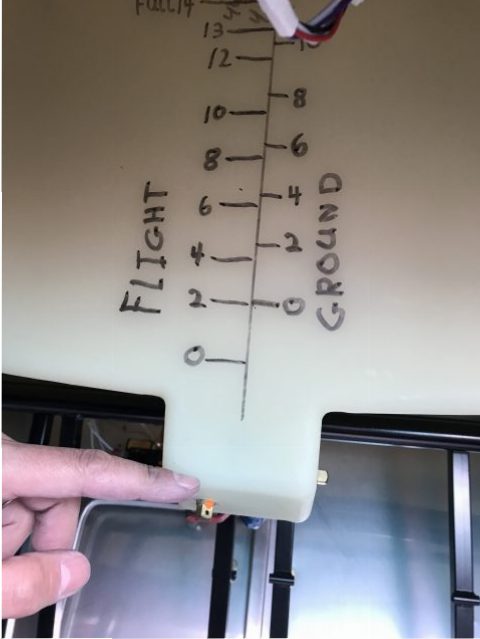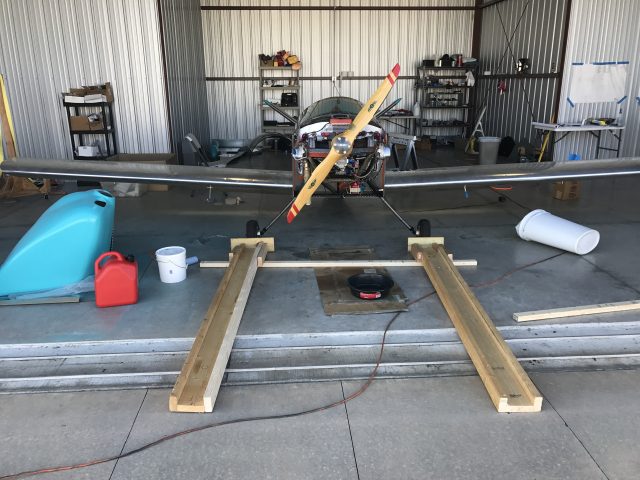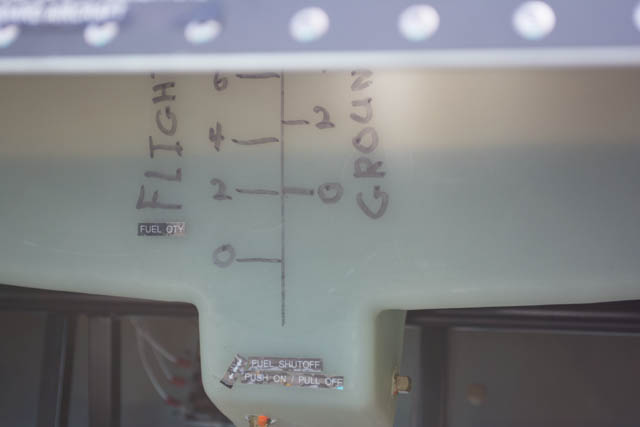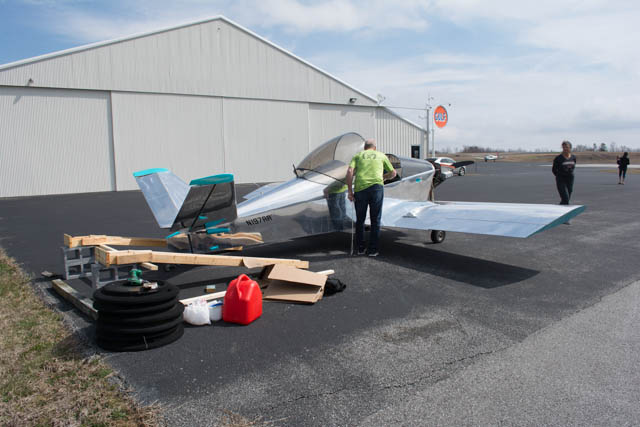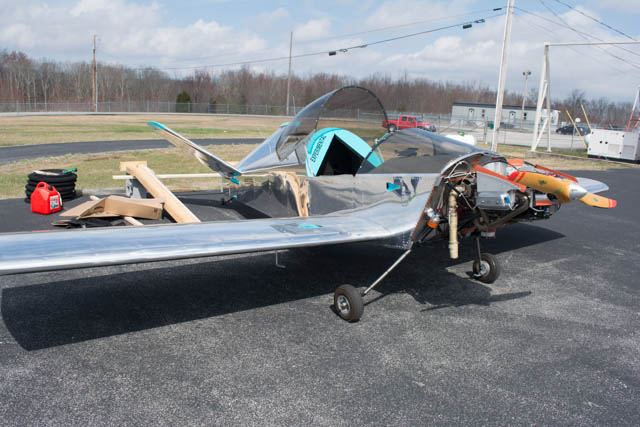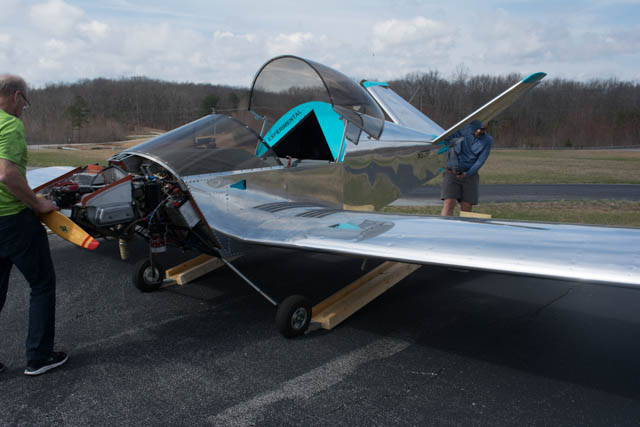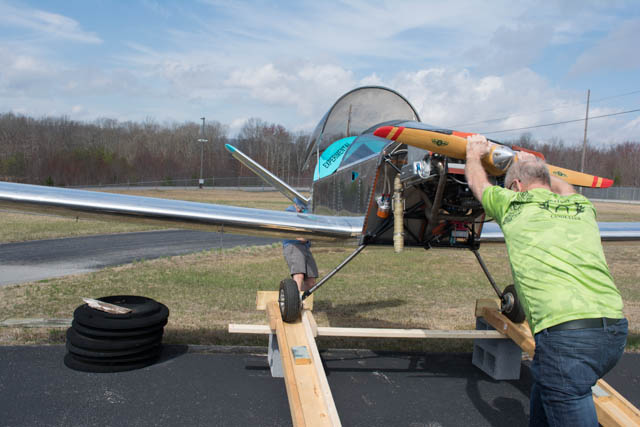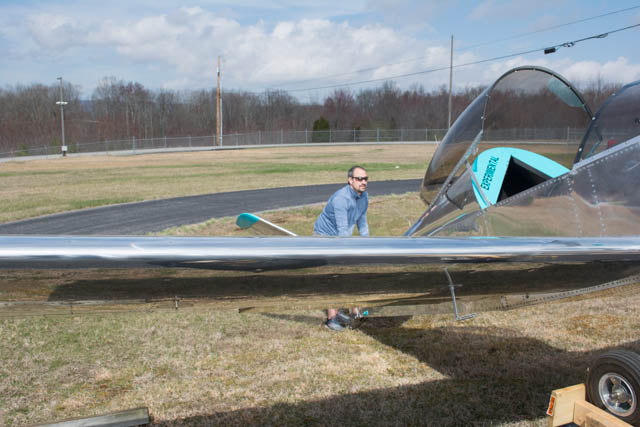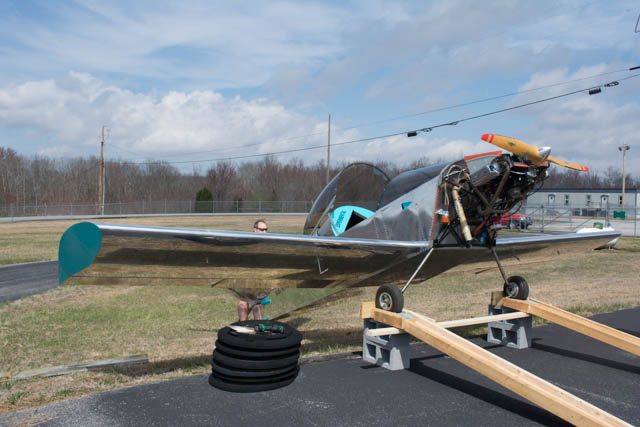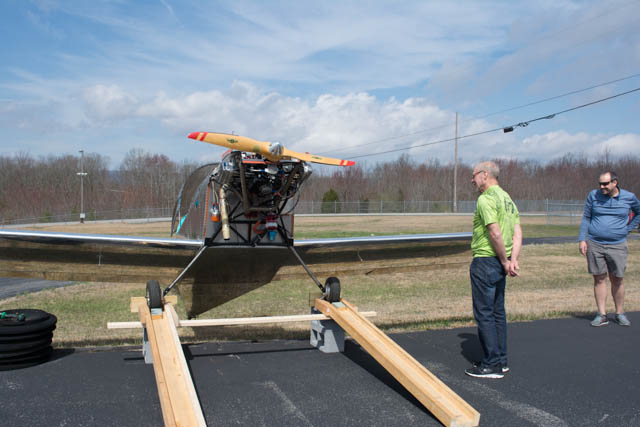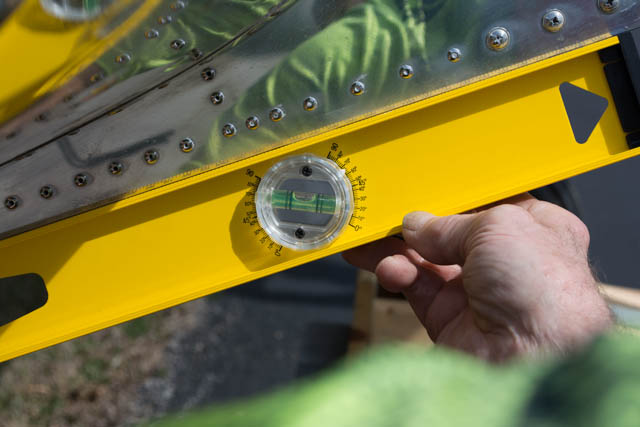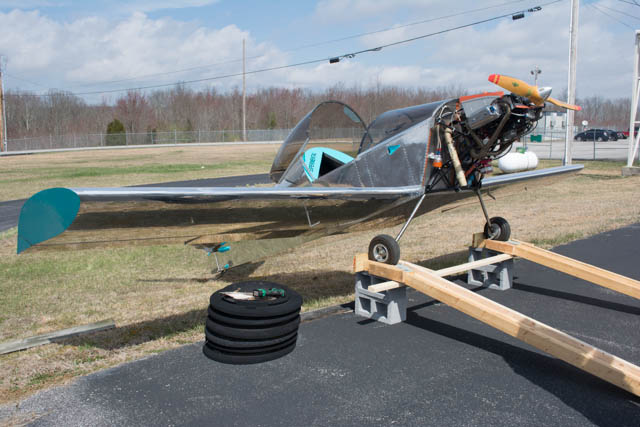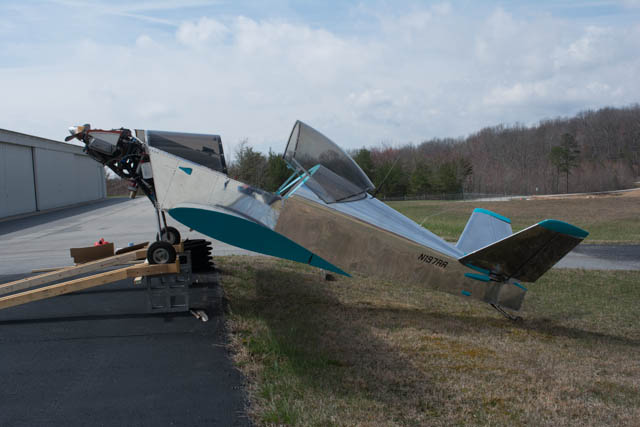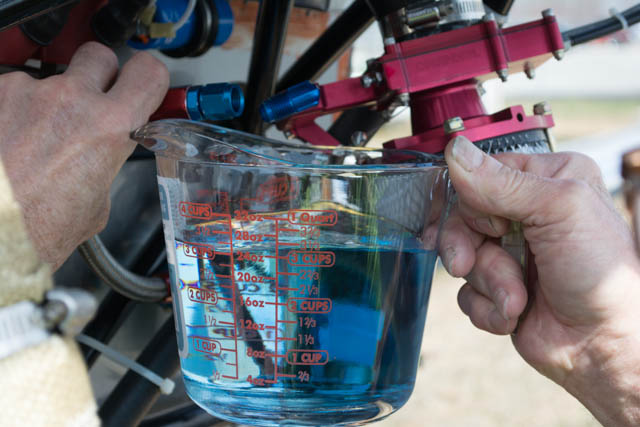Total Build Time: 1350 hours
The first step I took in my fuel system test was to see at what point there is too little fuel in the tank to gravity-feed the engine. I drained most of the fuel out of the tank and did a short engine run until it sputtered out.
The fuel level at my finger is how much fuel was left in the tank when it quit running at idle on the ground (nose-up, tailwheel on the ground.) There would probably need to be a bit more fuel in the tank to supply the carburetor at higher power setting but still, this shows that my “zero fuel on the ground” mark, which I marked with 1 gallon added to an empty tank, gives a pretty good safety margin for unusable fuel.
The next test I wanted to perform was a fuel flow rate test in a nose-high/climbing pitch attitude. In order to perform this test I needed to find a way to put the plane securely on the ground somewhere I could run the test. There are no deep ditches around the ramp area at my airport, so I had to come up with something else.
My solution was to re-purpose the ramps that I had used to load the plane into a U-haul trailer back in 2015. I cut the last 18-or so inches off the ramps and re-attached them at an angle to create a platform which would be set on top of cinderblocks for the main wheel to sit on. The rest of the ramp could then be used to roll the plane up onto the blocks.
The next step was to fill the plane with just 1 gallon of usable fuel. I wanted to do this test at a low fuel quantity to test the worst-case scenario of high nose pitch and low fuel.
We then moved the plane to the edge of the ramp where there was a bit of decline in the grass, which would let me set the tail-wheel lower.
Bill then helped me roll the plane up the ramp and secure it on top of the cinderblocks, after which I laid the tail-wheel down in the grass.
We then determined that we had achieved a 25-degree nose up attitude, which is a VERY steep climb angle.
I then performed the rate test. I set a timer for 30 seconds.
Then, while Bill held a measuring cup below the fuel line at the same level that the fuel line connects to the carb, I carefully reached into the cockpit and turned the fuel shutoff valve to ON, and started the 30 second timer. When 30 seconds were up, I shut off the valve.
The picture above shows the quantity of fuel that drained in those 30 seconds. It came to just over 3 cups of fuel. This equates to a flow rate of 6 cups per minute, 360 cups per hour, or 22.5 Gallons Per Hour. The requirement is for a gravity-feed fuel system to be able to provide 150% of the engine fuel flow at takeoff power. With the fuel consumption rate of the Aerovee Turbo at takeoff probably somewhere around 10 GPH (will determine this in flight testing), then my minimum fuel system rate needed to be at least 15 GPH. This test successfully shows that even at minimum fuel and very high pitch attitudes, my fuel system will provide sufficient fuel flow to the engine.

